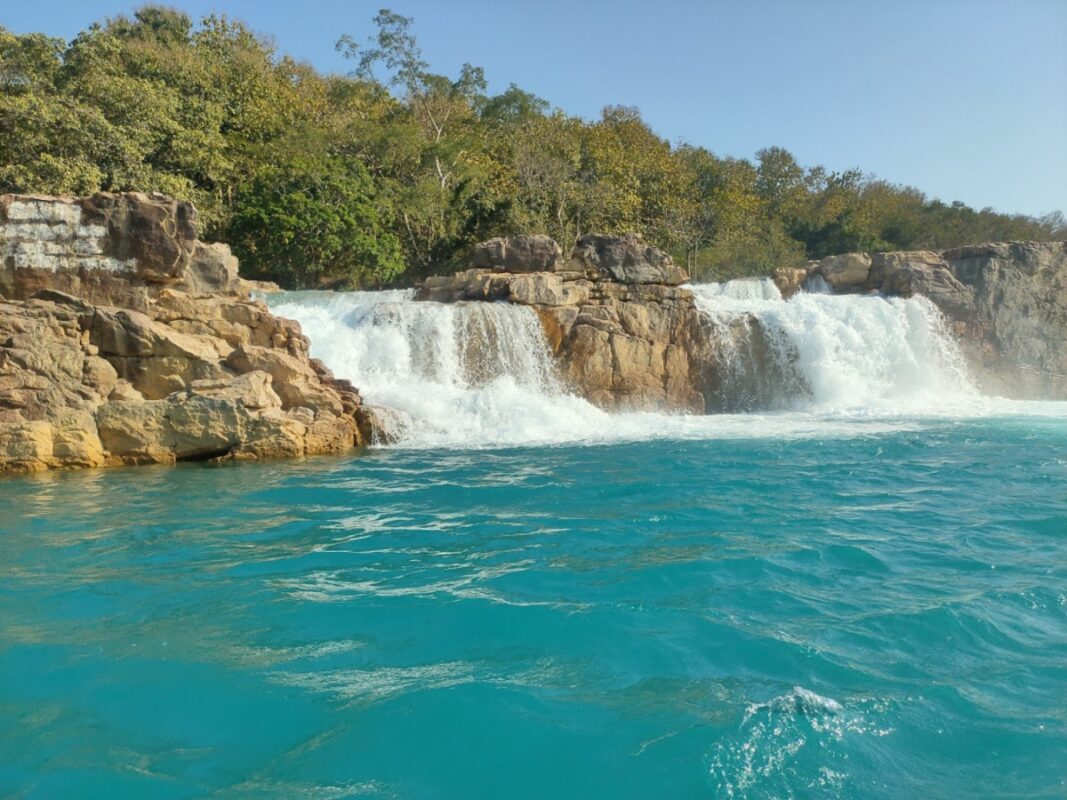Travel Guide to Panimur Waterfalls and Umrangso
Overview
- Location: Dima Hasao District, Assam
- Best Time to Visit: October to April (post-monsoon to early summer)
- Ideal Duration: 2–3 days
- Main Attractions: Panimur Waterfalls, Umrangso Reservoir, Dimasa Culture, Adventure Activities
How to Reach
By Air
- The nearest airport is Silchar Airport (approximately 125 km from Panimur Waterfalls) and Lokpriya Gopinath Bordoloi International Airport, Guwahati (approximately 245 km from Umrangso).
By Train
- Haflong Railway Station is the closest major railhead, located about 90 km from Panimur Waterfalls and 60 km from Umrangso. Regular trains connect Haflong to Guwahati and Silchar.
By Road
- Both destinations are accessible by road via private taxis or buses. From Haflong, Panimur Waterfalls is around 2 hours’ drive, while Umrangso is approximately 90 minutes away.
What to See and Do
1. Panimur Waterfalls
- Witness the Kopili River cascading over rugged rocks, creating a mesmerizing white-water spectacle.
- Explore the surrounding rocky trails and immerse yourself in the region’s untamed natural beauty.
- Enjoy picnicking and photography in the serene ambiance of the falls.
- Engage with Dimasa culture through local stories and rituals performed in the area.
- Participate in seasonal fishing activities in the pools formed by the falls.
2. Umrangso
- Visit the Kopili Hydroelectric Project and marvel at the engineering marvel that powers much of Assam.
- Take a boat ride on the serene reservoir, enjoying panoramic views of the hills.
- Trek to nearby hidden caves and immerse yourself in their mysterious charm.
- Experience local Dimasa festivals, showcasing traditional dance, music, and cuisine.
- Explore tea gardens and herbal trails, learning about the region’s unique flora and sustainable agriculture practices.
- Stargazing: With minimal light pollution, Umrangso is an ideal location to enjoy the night sky.
Suggested Itinerary
Day 1: Arrival and Panimur Waterfalls
- Arrive at Haflong and travel to Panimur Waterfalls.
- Spend the day exploring the falls, hiking the rocky terrain, and relaxing by the water.
- Enjoy a picnic lunch amidst nature.
- Return to a nearby stay or proceed to Umrangso for the night.
Day 2: Exploring Umrangso
- Begin with a visit to the Kopili Hydroelectric Project and the reservoir.
- Explore the surrounding tea gardens and forests.
- Indulge in local Dimasa cuisine at an eco-resort or homestay.
- Visit hidden caves or trek to scenic viewpoints in the area.
- Conclude the day with sunset views over the reservoir.
Day 3: Adventure and Departure
- Engage in boating or kayaking on the reservoir.
- Shop for local crafts and textiles at village markets.
- Depart for your onward destination.
Where to Stay
- Homestays and Eco-Resorts: Numerous options in Umrangso and nearby villages offer authentic experiences and modern amenities.
- Haflong: If staying in the district’s headquarters, Haflong offers budget and mid-range accommodations.
Travel Tips
- Carry Cash: ATMs are sparse in remote areas; carry sufficient cash for your trip.
- Travel in Groups: Roads can be remote; traveling in groups ensures safety and enhances the experience.
- Local Guides: Hire local guides to learn about Dimasa traditions and navigate hidden attractions.
- Eco-Friendly Practices: Respect the environment by avoiding littering and using biodegradable products.
- Weather Readiness: Pack warm clothes for winter visits and rain gear if traveling post-monsoon.
Nearby Attractions
- Haflong Hill: Known as Assam’s only hill station, it offers additional trekking and sightseeing opportunities.
- Maibang: Historical town featuring ancient Dimasa ruins and temples.
- Jatinga: Famous for its unique bird migration phenomenon.
Panimur Waterfalls and Umrangso provide a harmonious blend of natural splendor, cultural heritage, and adventure. Whether marveling at the cascading waterfalls or exploring the serene reservoir and surrounding hills, this trip promises a refreshing escape into the untouched beauty of Assam.

